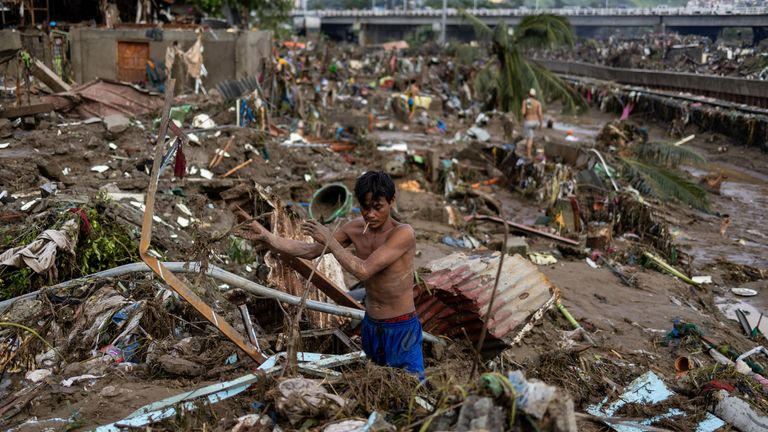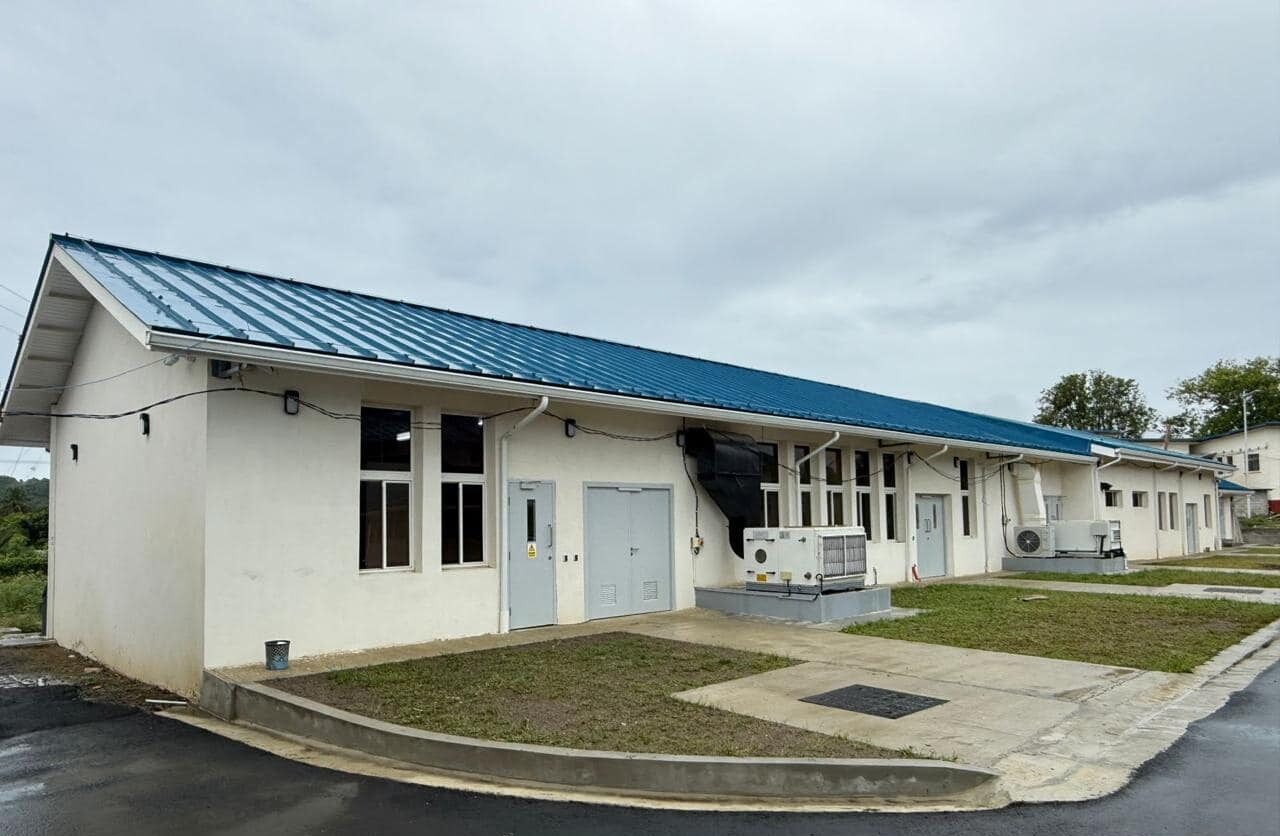The first term of school sports in St. Lucia is nearing its conclusion, with competitions wrapping up in team sports by the second week of November, well ahead of end-of-term exams. However, the Ministry of Youth Development and Sports (MYDS) is grappling with challenges in raising participation levels, coaching consistency, and overall standards. Despite these hurdles, school sports coordinator Isabel Alexander-Marquis expressed satisfaction with the term’s activities, particularly highlighting the smooth scheduling of basketball and netball tournaments at the Beausejour Indoor Facility, which remained unaffected by adverse weather conditions. Nevertheless, participation rates have been a persistent issue, with only about half of the island’s 24 secondary schools involved in netball and basketball. Football, on the other hand, has seen stronger engagement, with 19 teams in the Under-16 boys’ competition and 21 in the Under-19 boys’ tournament. Alexander-Marquis attributed the low participation to staffing gaps, including a lack of dedicated coaches and limited teacher availability. She also noted that some educators may lack confidence in coaching sports, while physical education teachers often juggle multiple responsibilities. Netball coordinator Shem Maxwell echoed these concerns, emphasizing the need for more schools to participate and for additional coaching support. Financial constraints and waning volunteerism have further exacerbated the staffing shortage, particularly with rising temperatures discouraging outdoor activities. Despite these challenges, both Maxwell and Alexander-Marquis observed improvements in the quality of play this year, with more competitive games and consistent progression from younger age groups to varsity levels. Alexander-Marquis urged schools to establish alumni organizations and seek support from graduates to enhance coaching, transportation, and nutrition, which could significantly boost the success of school-level and national sports programmes.
标签: Saint Lucia
圣卢西亚
-

Government shutdown becomes longest in US history
The United States government shutdown has now extended into its 36th day, marking the longest such closure in the nation’s history. Initiated on October 1 due to Congress’s failure to agree on a new funding deal, the shutdown has left hundreds of thousands of federal employees without pay and millions of Americans without access to critical services. The impasse between Democrats and Republicans has persisted for weeks, with no immediate resolution in sight, though some lawmakers have expressed cautious optimism about a potential breakthrough. Senate Majority Leader John Thune, a Republican, hinted at a possible resolution, stating, ‘I think we’re getting close to an off-ramp here.’ The previous record for a government shutdown was set during President Donald Trump’s first term, lasting 35 days in 2019. The current shutdown has had severe consequences, including delayed paychecks for federal workers and growing concerns about disruptions to air travel. Transportation Secretary Sean Duffy warned that certain parts of U.S. airspace might need to be closed if the shutdown continues, as 13,000 air traffic controllers are working without pay. Low-income Americans relying on government assistance programs, such as the Supplemental Nutrition Assistance Program (SNAP), have also been affected. While a court ruling mandated the release of contingency funds for SNAP benefits, Trump has suggested that full benefits will only be restored when Democrats agree to reopen the government. The Republican-controlled Senate has repeatedly attempted to pass a short-term funding bill, but Democrats have refused to support it unless Republicans agree to extend healthcare subsidies for low-income Americans. As the November 21 funding deadline approaches, lawmakers face increasing pressure to reach a compromise. Some moderate Democrats and Republicans have shown willingness to negotiate ahead of the Thanksgiving holiday, offering a glimmer of hope for an end to the prolonged shutdown.
-

What the Hilaire-Chastanet Ruling on the CIP Really Means
The Eastern Caribbean Supreme Court recently dismissed an injunction sought by Allen Chastanet against Dr. Ernest Hilaire, the Minister overseeing Saint Lucia’s Citizenship by Investment Programme (CIP). This decision has sparked contrasting reactions from supporters of the Saint Lucia Labour Party (SLP) and the United Workers Party (UWP). The SLP views the ruling as a validation of the programme’s legality, while the UWP emphasizes that the case’s substantive issues remain unresolved. The court’s decision highlights the complexities of interim injunctions, particularly in public law, and underscores the importance of evidence in judicial proceedings. Chastanet’s claims, which included allegations of unlawful practices and irregularities in the CIP, were deemed insufficient to meet the evidentiary threshold required for an injunction. The court also considered the potential economic impact of halting the programme, noting that existing statutory safeguards could mitigate any alleged harms. The case underscores the broader challenges of balancing legal scrutiny with economic interests in governance.
-

EDITORIAL: At the crossroads of the youth voice and their vote
The significance of youth participation in democratic processes has been a recurring theme in countless discussions and writings. While the importance of including all societal sectors in politics is widely acknowledged, the focus here is on the urgent need for meaningful youth engagement in Saint Lucia. Young people constitute a substantial portion of the population, making their involvement not just desirable but essential for the nation’s progress. Merely telling them that their voices and votes matter is insufficient; actions must align with words to foster hope and trust. The United Nations defines youth as individuals aged 15 to 24, and in Saint Lucia, this group, along with those up to 39 years old, represents nearly 40% of the population. This demographic holds immense potential to influence the country’s political, economic, and social trajectory. However, too often, youth are included in political processes superficially, either for symbolic gestures or token representation. This must change. Young people must recognize their collective power, equip themselves with knowledge, and actively advocate for policies that impact their lives. Historical attempts to establish a National Youth Policy in Saint Lucia have been marred by delays and insufficient political backing. It is time to move beyond rhetoric and implement concrete measures that ensure youth voices are not only heard but also acted upon. The youth are not just the future; they are the present, and their engagement is critical for the nation’s prosperity.
-

From Mindoo to mastery: Cricket coaches level up
The Saint Lucia Cricket High Performance Centre (HPC) is emerging as a pivotal force in reshaping the nation’s cricketing landscape. Located at the Mindoo Phillip Park, the HPC is dedicated to cultivating local talent into world-class players. A recent two-day coaching workshop, held on October 31 and November 1 at the Daren Sammy Cricket Ground, marked a significant milestone in this transformative journey. The event brought together coaches from across Saint Lucia to enhance their skills in talent identification, high-performance planning, fast bowling, and injury management. This initiative aligns with the broader vision of Wayne Auguste, president of the Saint Lucia National Cricket Association, who aims to elevate the HPC’s standards to international levels. Auguste emphasized the importance of aligning the HPC’s programs with Cricket West Indies, ensuring that government investments yield tangible results. The workshop’s chief facilitator, Ramesh Subasinghe, a former Sri Lankan first-class cricketer and development specialist, highlighted the critical role of local coaches in nurturing future stars. Subasinghe pointed to Ackeem Auguste, a Saint Lucian batsman who recently excelled in international cricket, as a testament to the impact of advanced training. Craig Emmanuel, chairman of the HPC Board of Directors, expressed satisfaction with the workshop’s outcomes, noting its role in addressing coaching gaps and equipping coaches to guide young athletes toward professional success. The HPC’s efforts underscore cricket’s enduring significance as a pathway for Saint Lucian youth, with the potential to transform dreams into reality.
-

Typhoon Kalmaegi hits Vietnam after killing at least 114 in Philippines
Typhoon Kalmaegi, one of the most powerful storms to hit Asia this year, wreaked havoc across Vietnam and the Philippines, leaving a trail of destruction and claiming at least 114 lives. The typhoon made landfall in Vietnam on November 6, with winds reaching up to 92 mph (149 km/h), forcing the closure of six airports and disrupting hundreds of flights. The Vietnamese government has mobilized over 260,000 soldiers and 6,700 vehicles, including six aircraft, for rescue and relief operations. The storm has already caused widespread damage, including flooded homes, uprooted trees, and shattered infrastructure in provinces like Dak Lak and Gia Lai. Local media reported that hundreds of residents in Dak Lak province called for emergency assistance as their homes collapsed or were inundated by floodwaters. Vietnam’s weather bureau warned of potential waves up to 8 meters (26 feet) in the South China Sea, posing a significant threat to coastal communities. Prime Minister Pham Minh Chinh emphasized the urgency of reaching isolated areas to ensure access to food, water, and essential supplies. Meanwhile, the Philippines faced catastrophic flooding, particularly in central regions like Cebu, where entire neighborhoods were wiped out. President Ferdinand Marcos Jr. declared a state of emergency as survivors began the arduous task of cleaning up and rebuilding. The typhoon’s impact extended beyond Vietnam and the Philippines, with Thailand also bracing for flash floods and landslides. The storm serves as a stark reminder of the increasing intensity of weather events in the region, prompting calls for heightened preparedness and resilience.
-

Emergency simulation exercise at Vigie Airport on Tuesday
The Saint Lucia Air and Sea Ports Authority (SLASPA) has announced a comprehensive emergency simulation exercise scheduled for November 11, from 10:00 a.m. to 12:00 noon, at the George F L Charles Airport in Vigie. This initiative is a critical component of SLASPA’s commitment to maintaining safety standards as mandated by the International Civil Aviation Organisation (ICAO). During the exercise, flight operations will be temporarily suspended to ensure the simulation’s effectiveness. Residents and travelers may observe heightened activity around the airport, which is directly related to the drill and should not raise alarm. Additionally, traffic flow along Nelson Mandela Drive, the primary access route to the airport, will experience temporary restrictions. Motorists are advised to adhere to instructions from the Royal Saint Lucia Police Force Traffic Department to facilitate orderly movement during this period.
-

The cost of ignoring music copyright in the OECS
Across Saint Lucia and the Organization of Eastern Caribbean States (OECS), musicians are achieving international acclaim, yet many are still deprived of a crucial income source: royalties. While the Caribbean music industry contributed an estimated $104 million to the global $29.6 billion revenue in 2024, a significant portion of this value eludes local creators. This figure excludes royalties owed to composers from broadcasters, festivals, and other music users in the region, many of whom fail to compensate for the music they utilize, thereby violating copyright laws and depriving composers, songwriters, and producers of their rightful earnings. The Eastern Caribbean Collective Organisation for Music Rights (ECCO), responsible for collecting and distributing royalties, faces persistent challenges in ensuring compliance. CEO Martin James highlights that out of Saint Lucia’s 24 radio stations, only five are licensed, while in Grenada, Dominica, St. Vincent and the Grenadines, and Antigua, not a single station adheres to licensing requirements. James emphasizes that obtaining licenses for music use is essential, even when performers are paid separately, as the composer or songwriter may not be the performer. ECCO, through reciprocal agreements with global collective management organizations (CMOs), also collects royalties for international artists played in the OECS, from Burning Flames to BTS. However, local artists must register and properly credit their works to benefit. Unclaimed royalties for unregistered artists are held in escrow for three years before being redistributed elsewhere. James attributes the issue to both legal and cultural factors, advocating for increased local content on airwaves to retain more royalties within the region. ECCO, a non-profit based in Saint Lucia, distributes royalties annually, with 44% of its $1.4 million payout in 2025 going to its members. Despite these efforts, James acknowledges that the battle for fair compensation continues, with ECCO focusing on moral persuasion and government collaboration to address systemic challenges.
-

As elections approach, St Jude remains a defining battleground
The long-awaited redevelopment of St Jude Hospital in Saint Lucia appears to be nearing its final stages, according to government officials and contractors. However, uncertainty remains regarding the timeline for full completion and operational readiness, leaving residents in the southern region of the island in suspense. The project, which has spanned nearly two decades, has been marred by political disputes, delays, and significant financial investments. The original hospital, a cornerstone of healthcare in the south since its establishment in the 1960s by Mother Irma and the Sisters of the Sorrowful Mother, was tragically destroyed by a fire in 2009. Since then, medical services have been temporarily relocated to the George Odlum Stadium, placing immense strain on healthcare professionals and patients alike. The reconstruction efforts have been a contentious issue between the Saint Lucia Labour Party (SLP) and the United Workers Party (UWP), with both parties initiating separate projects. The SLP, under Prime Minister Philip J Pierre, pledged to complete the hospital at its original site during their tenure, while the UWP had previously proposed an alternative structure referred to as ‘the box.’ The financial toll of the project is staggering, with reported costs exceeding EC$400 million, including a EC$201 million loan from the government of Saudi Arabia. In October 2025, Prime Minister Pierre announced that the physical infrastructure would be ready by year-end, though the hospital’s commissioning as a fully functional facility remains pending. Contractors have reported the project as 98.5% complete, emphasizing ongoing improvements. The new facility is set to include a dialysis center, nursery, offices, and other essential amenities. Despite progress, questions linger about the government’s ability to deliver on its promises, particularly as the upcoming election cycle intensifies scrutiny. Critics, including UWP candidate Benson Emilie, have expressed disappointment, accusing the SLP of failing to meet its commitments. In contrast, the SLP defends its achievements, highlighting the challenges inherited from previous administrations and reaffirming its dedication to delivering the hospital. As the project approaches completion, its impact on the political landscape and the future of healthcare in Saint Lucia remains a focal point of national discourse.
-

Scholarship reform is giving more students a shot
For countless Saint Lucians, higher education represents a transformative opportunity to uplift not only individuals but entire families. However, the steep costs associated with university education have long rendered this dream unattainable for many. In a groundbreaking move, the Government of Saint Lucia, in collaboration with Monroe University Campus, introduced the First Generation Scholarship Programme. This initiative is a cornerstone of the broader “One University Graduate per Household” policy, specifically targeting families where no member has previously attended university.
